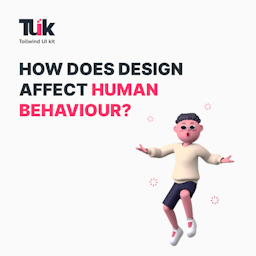Others
10 November 2021
Is good UX invisible?

Hi everyone,
Today’s blog post is about a widely discussed phenomenon of design that is invisible UX. Throughout the years, designers have emphasized the importance of the invisibility of a design for a good user experience. Design is everywhere, no matter how you define it, it boils down to the experience of a user when they’re interacting with that design.
Design of everyday things

In the widely acknowledged book by Don Norman (the father of modern-day design to many), he talks in detail about the design of things and its relationship with user behavior.
As I said earlier, design is everywhere, but you don’t notice how impeccable the design is in everyday things. We don’t notice how good the AC is working as it does what we expect it to do. We only focus on the flaws of a design when it is unable to perform the function that it’s supposed to do. Irene Au, a pioneer in Web design, says that:
“Good design is like a refrigerator - when it works, no one notices, but when it doesn’t, it sure stinks.”
In the design of most everyday things, the elevation of user experience stems from the effortlessness of the user while interacting with the design and the seamlessness of its experience. Hence, we can conclude that focusing on how well something works is a result of the good design of that product.
Invisible Web Design

Web design has always been focused on user experience and very rightly so. Designers have always believed that good UX is invisible. But there has been some debate in design circles about UX being invisible and the relation of design in this circumstance. Design should be focused on making things easier and simpler for end-users. When we say that a good UX is invisible, what we actually mean is that the experience, by design, should be smooth enough to make it look like that.
Designers put a lot of effort into elevating the user experience to an invisible degree, yet they misinterpret the meaning of truly invisible UX. The more work/conscious interaction a user has to perform, the more noticeable your design. The most appropriate approach is to try to assess user behavior and make things more intuitive so the user is able to swift through the design.
Less is more
Generally, this phrase is associated with minimalistic design. However, design can be kept simple without being minimalistic. The approach to truly invisible design is making users feel familiar with the design. In some cases, designers try to go outside the box and end up making things more complicated for users that itself is counterintuitive, as a good design must always have a good experience.
Additionally, users should not be thinking about the effort that goes into making the design. Following the general concept of the design of everyday things, designers can incorporate a major goal of making things easier in their design to achieve invisibility. I suggest you check out our previous blogs on the approaches and stages of the design process & thinking to get more insight into the application of different approaches in web design.
Intuitive design
An easier design is preferred by users over a design that requires their attention and focus. Intuitive design is when a user knows how a design works by intuition. A design is intuitive when a user’s current knowledge matches the target knowledge of the design. The important thing to consider here is that a design can only be intuitive for a user that already has domain knowledge about the design. Hence, it boils down to thorough user research and conducting it to your target users. If you’re not sure about who is going to use your design, you can never make it intuitive subsequently.
Conclusion
We know that good design is invisible, but what really makes design invisible is the extent of the smoothness in the overall experience that it provides to users. Making things easier and knowing your users’ behavior certainly is the key to building designs that are intuitive and flawless.
Hence, if you want your design to be “invisible”, make your experience seamless to the point where users are unaware of the conscious effort that they have to put in, in order to make things work.

